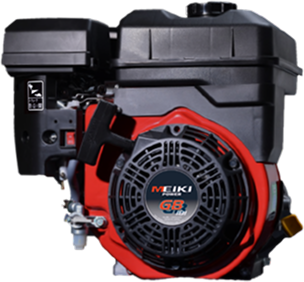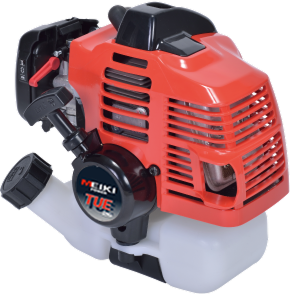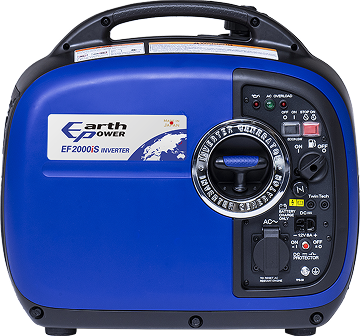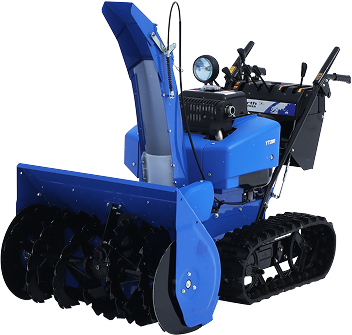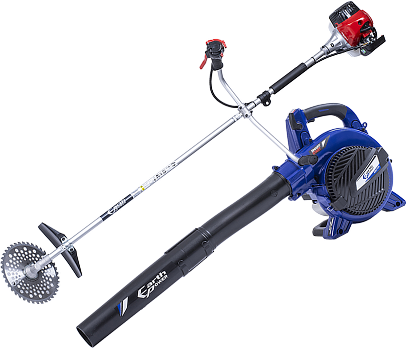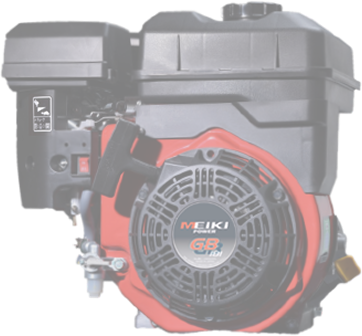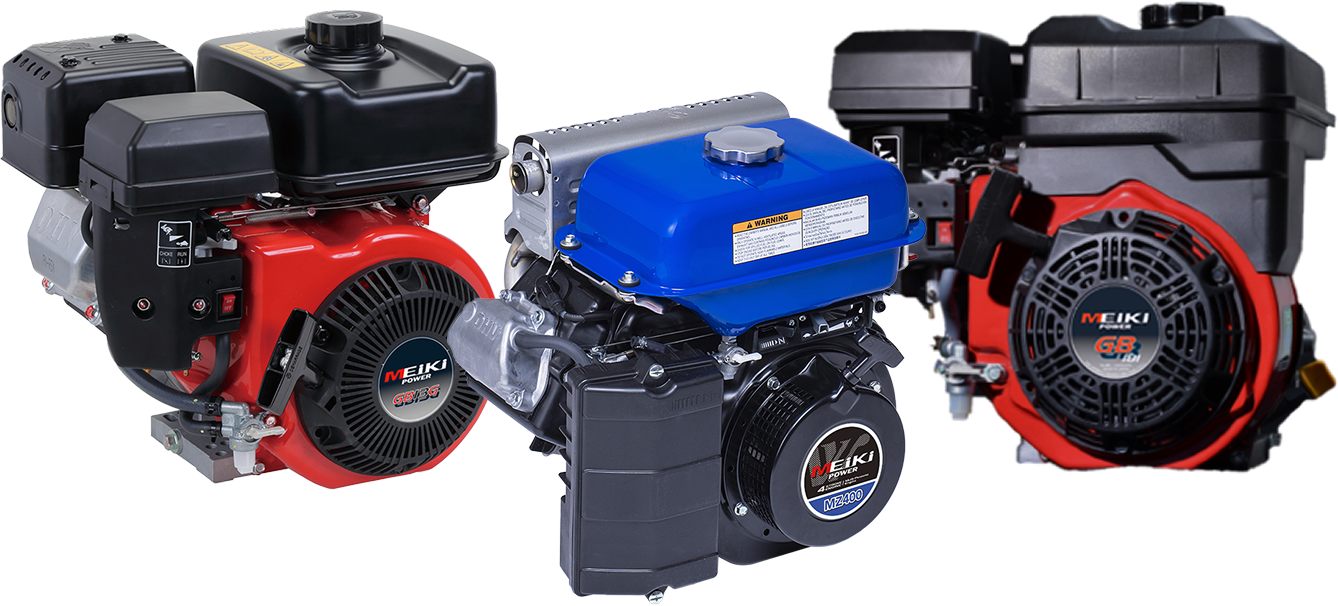Before using the 4-stroke engine, thoroughly read the manual to the end. Use the engine correctly. If the engine is handled incorrectly, a serious accident or damage could occur.
Engine rotation speed
- Low-speed setting rotation speed
- This refers to the lowest idle rotation speed that can be achieved with the throttle lever. It is set based on a solo operation of the engine at our factory before shipping.
It varies according to the usage environment, such as temperature, pressure, and altitude; how the engine is mounted in an OEM device, the break-in condition, and fuel conditions (whether alcohol is used and in what ratio, etc.). Adjust it as needed.
- Dead-slow rotation speed
- This refers to the rotation speed set with the dead-slow carburetor adjustment screw. It is set based on a solo operation of the engine at our factory before shipping.
For engines where an idle rotation speed cannot be set, this can be used instead of the idle rotation speed setting, but it is mainly adjusted in order to prevent engine problems when the engine rotation speed suddenly increases or decreases.
It is set at a rotation speed below the idle rotation speed, but like the idle rotation speed setting, it varies according to the usage environment, such as temperature, pressure, and altitude; how the engine is mounted in an OEM device, the break-in condition, and fuel conditions (whether alcohol is used and in what ratio, etc.). Adjust it as needed.
- High-speed setting rotation speed
- This refers to the highest idle rotation speed that can be achieved with the throttle lever. It is set based on a solo operation of the engine at our factory before shipping.
It varies according to the usage environment, such as temperature, pressure, and altitude; how the engine is mounted in an OEM device, the break-in condition, and fuel conditions (whether alcohol is used and in what ratio, etc.). Adjust it as needed.
Carburetor
- We will determine the carburetor specifications based on the fuel conditions (alcohol content, type of oil, etc.) and altitude of the destination country specified during discussions.
If the fuel conditions of the destination country change, it may not be possible to maintain the set output, and engine failure or other problems could occur.
In that case, we can discuss a change to the specifications based on the usage environment. - If the specifications support the use of alcohol, we only make changes to the fuel supply in order to ensure that the engine can still operate in the specified usage environment, but the use of fuel with an alcohol content will cause the engine to degrade faster.
- If machinery will be stored for a long time after use, close the fuel cock and remove the gasoline from the carburetor chamber before storage.
The gasoline in the chamber could degrade during storage, causing engine problems.
General
- Standard engine models do not have a waterproof specification.
Water inclusion or adhesion due to rain, high humidity, etc., under certain conditions could lead to rust, failure, etc. - Standard engine models do not have a dustproof specification.
If dust enters the engine, it could accelerate part wear, cause failure, etc. - During the compatibility test, we will endeavor to obtain as much information as possible about the usage environment, including the need for waterproof or dustproof specifications as mentioned above. We can change parts or handle optional specifications based on your needs.
Unexpected environmental factors (temperature, humidity, rain, dust, etc.) could cause engine degradation, failure, malfunction, or other issues. - If a 4-stroke engine is repeatedly started and stopped at the low-speed rotation setting, because of the structure of the engine, the lubricant could become milky.
If this occurs and the lubricant is not replaced, the engine could wear faster and fail.
After starting the engine, first set it to the high-speed rotation setting to warm up the engine. - If a 4-stroke engine is run continuously near the low-speed rotation setting, the spark plug could smoke, and engine problems could occur.
If you remove the spark plug and perform a cleaning as needed, the engine can still be operated, but you must set the engine to the high-speed rotation setting after starting it.
Select an engine with a suitable horsepower that does not use a speed near the low-speed setting. We can alleviate the issue if you specify and use a spark plug with a suitable heat rating. - The engine’s starter and other electrical components are expected to be used with commercial 12V-24Ah lead-acid batteries.
If you plan to use a battery with a low charge capacity, sufficiently verify it in advance.
- Some parts of our engine use a CT (self-tapping) bolt. Re-tightening the CT bolt could cause the bolt hole to be damaged. Therefore, do not have customers tighten the bolt with customer-supplied parts (ground wire, etc.) when assembling the machinery.
If parts must be tightened with the CT bolt, contact us in advance regarding how it will be used.
- If you expect the engine to be frequently cycled between low-speed and high-speed rotations, the control panel specifications must be changed. Allow us to discuss this in detail when the specifications are set.
- Our 4-stroke engines can be used on slopes of up to 25 degrees in any direction. For higher slopes, please inform us of the angle, usage duration, and other details on how the engine will be used.
If the above angle will be exceeded when the engine is stored or stopped, issues such as overflow could occur. Ensure you close the fuel cock.
- If you are considering exporting the engine, you must contact us in advance and get our approval before shipping.
You must also check and observe the laws and regulations of the destination country.

